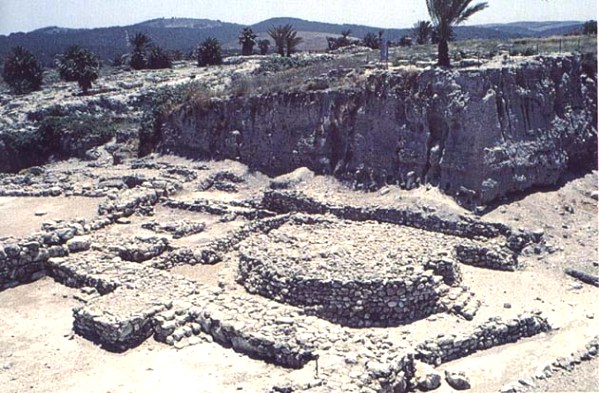Click here to view the original article.
One of the most famous Hebrew seals ever discovered has been lost for 95 years. It is known only from a photograph—and from the myriad replicas (including belt buckles) made from an impression produced before the seal was lost.
It was recovered in March 1904 during the earliest excavation of Megiddo, led by Gottlieb Schumacher, an American-born German engineer whose family had moved to Haifa when he was 12 years old. He lived mostly in Palestine until the First World War, when he moved to Germany. He came back to Palestine in 1924, where he died a year later.
The seal is oval shaped. Scholars describe it as “scaraboid” (scarab-like). Made of precious jasper, it is unusually large—nearly an inch and a half across. It has no perforation through it, so it must have been encased in a ring rather than worn around the neck on a string.
Its iconographic feature is a beautiful roaring lion with a magnificent tail curving high above the animal. Above and below the line on which the king of beasts stands is a clear inscription (in the ancient Hebrew script used before the Babylonian Exile)-
לשמע
עבד ירבעם
[Belonging] to Shema‘
servant of Yarob‘oam [=Jeroboam]
A single line encircles the seal.
When used in connection with royalty, the term “servant” does not denote someone who pours the king’s wine and irons his shirts, but a high government official. That Shema‘ is a man of some wealth, prominence and importance is obvious from the large, elegant seal that he owned. This judgment is only confirmed by the fact that he serves King Jeroboam.
But there were two kings of Israel named Jeroboam. Scholars call them Jeroboam I and Jeroboam II. Jeroboam I was the son of King Solomon. He ruled Israel after the kingdom split apart following Solomon’s death, from about 928 to 907 B.C. Jeroboam II ruled Israel from about 784 to 748 B.C.
Most scholars believe that this seal refers to Jeroboam II, the eighth-century Jeroboam. But David Ussishkin, a prominent Israeli archaeologist who is currently codirecting a dig at Megiddo, believes it refers to the tenth-century ruler, Jeroboam I. Whether this argument could be settled if we had the seal itself, rather than just a photograph, is questionable.
Shortly after the seal was discovered, it was sent to the Ottoman sultan in Constantinople.
It has been missing ever since.
Recently there have been rumors that it is now in Switzerland. Other rumors discount this.
This, then, is an appeal- Does anyone have any information about the whereabouts of this seal? We would like to encourage whoever has possession of this seal to come forward. We will be grateful. We will not vilify him or her. We will publish a picture of the seal, and we will, if he or she wishes, maintain his or her anonymity. We have a good record of keeping secrets. The identity of the person who provided us with pictures of the then-unpublished Dead Sea Scrolls has never been revealed.1 Similarly with the owner of the seal of Ba‘alis, the Ammonite king who arranged the assassination of Gedaliah, the governor of Judah.2 On the other hand, if whoever is holding the seal is willing to be identified, we will honor that person.
1. Robert Eisenman and James M. Robinson, A Facsimile Edition of the Dead Sea Scrolls, 2 vols. (Washington, DC- Biblical Archaeology Society, 1991).
2. See Robert Deutsch, “Seal of Ba‘alis Surfaces,” BAR 25-02.
